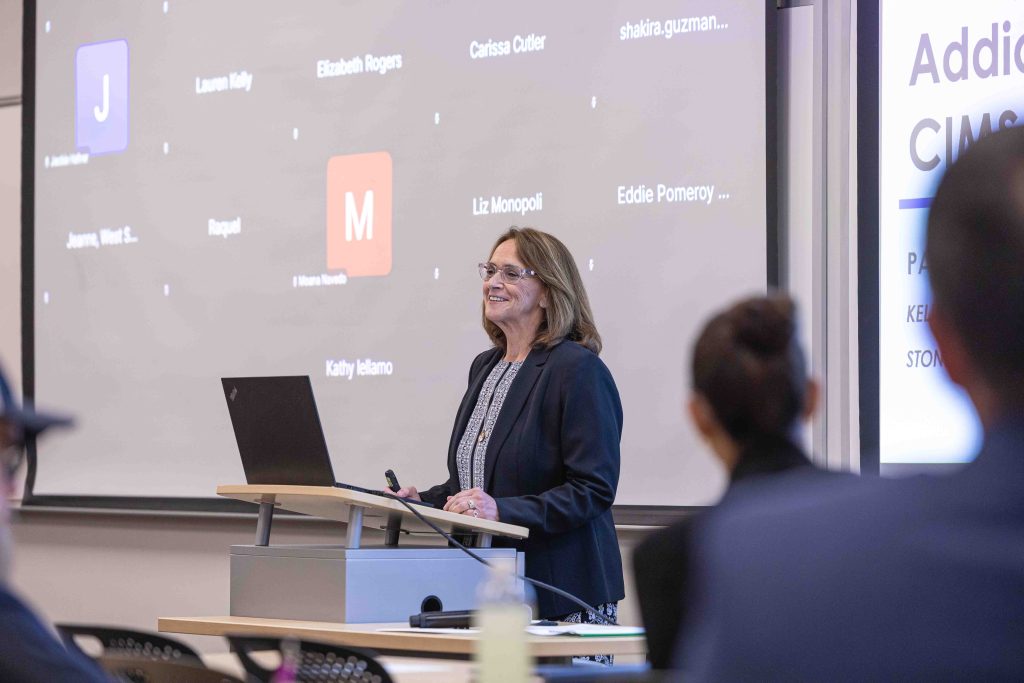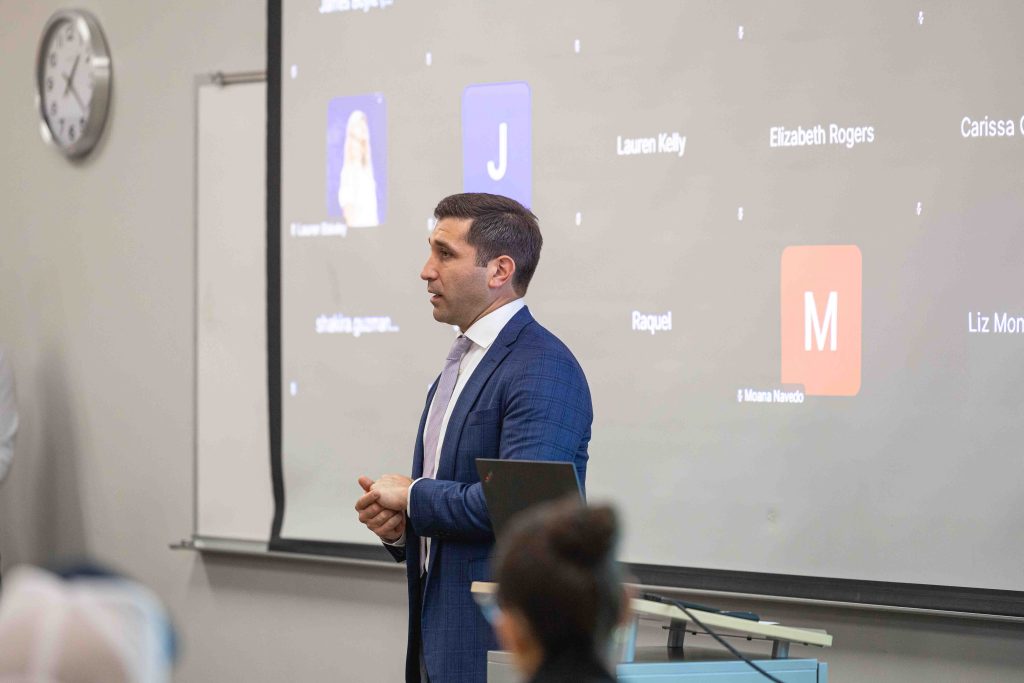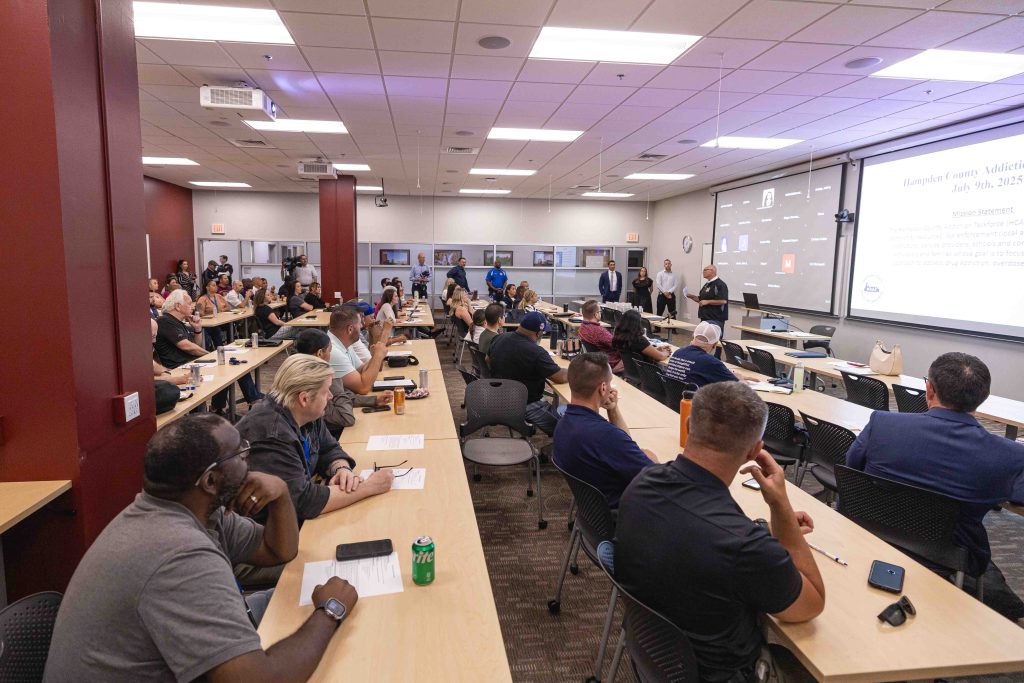Hampden County Addiction Taskforce Highlights Life-Saving Progress and Data Innovation at July Forum





July 11, 2025 – Springfield, Massachusetts – In 2024, Hampden County recorded 615 fatal and non-fatal overdose incidents, with 92% concentrated in just five cities and towns, underscoring the urgent need for targeted interventions in the region. For nine years, the Hampden County Addiction Taskforce (HCAT) has been working to combat this crisis through coordinated outreach, data-driven strategies, and community-based partnerships aimed at prevention, treatment, and recovery support across the county.
HCAT, co-led by the Hampden District Attorney’s Office and the Hampden County Sheriff’s Office, convened on Wednesday, June 9, to present new data, celebrate ongoing progress, and recommit to the collective mission of saving lives from substance use disorder. The meeting featured a presentation from Pam Kelley and Dr. Sean Varano of Kelley Research Associates on the Critical Incident Management System (CIMS) data, as well as updates from HCAT’s Rapid Response and Connection team.
Since its inception, the Rapid Response and Connection Team has continued to show measurable progress:
- Total outreach attempts: 2,235
- Successful contacts made: 1,344
- Individuals assisted into treatment: 231
- From June 2024 to June 2025, 147 individuals were assisted into treatment.
June 2025 snapshot:
- Outreach attempts: 74
- Contacts with friends/family: 46
- Individuals assisted into treatment/detox: 18
- Narcan provided: 48
- Fatal overdoses: 8
Compared to data from January through June 2024, fatal overdoses in the same period of 2025 have decreased by 23%, non-fatal overdoses are down 16%, and at-risk referrals have increased by 50%.
Pam Kelley and Dr. Sean Varano provided a deep dive into the CIMS platform, which was launched in Hampden County in June 2021. It supports data-sharing and coordination among agencies and is pivotal to overdose deflection and intervention efforts.
As of June 30, 2025, sixteen Hampden County cities/towns utilize CIMS to track overdose incidents, at-risk referrals, or behavioral health events including: Agawam, Blandford, Chester, Chicopee, East Longmeadow, Hampden, Holyoke, Longmeadow, Ludlow, Monson, Palmer, Southwick, Springfield, West Springfield, Westfield, and Wilbraham.
Key Findings from 2024 CIMS Data
- Overdose Incident Data:
- In 2024, 615 fatal and non-fatal overdose incidents were recorded in Hampden County, with 92% occurring in five cities/towns: Springfield (55%), Chicopee (18%), Holyoke (7%), Westfield (6%), and West Springfield (5%). Seventy-eight percent of overdoses occurred in the individual’s town of residence, with 22% happening in a different jurisdiction.
- Substance Trends:
- A staggering 95% of overdoses involved a known or suspected opioid, with 99% of fatal overdoses linked to opioids. Naloxone was administered in 72% of overdose incidents, with 37% involving administration by family, friends, or bystanders prior to first responders’ arrival.
- Demographics:
- Among the 839 individuals involved in overdose or at-risk referrals in 2024, 70% were male and 30% female. Ages ranged from 12 to 81 years old. Fifty-five percent identified as White, 26% as White/Hispanic, 11% Black, 2% Black Hispanic, 4% other, and 2% unknown. During the meeting, concerns were raised that distrust in law enforcement may lead to underreporting and fewer outreach opportunities among Black community members. Kelley and Varano agreed that the data can be imperfect as it is only as good as what has been reported.
- Homelessness:
- Fourteen percent of individuals were homeless at the time of overdose or referral, with the majority, 63%, located in Springfield.
- Follow-Up and Outreach Efforts:
- In 2024, 996 follow-up outreach attempts were made with a 59% success rate. Of those contacted, 84% of individuals and 65% of family/friends accepted information and support services. Naloxone distribution during follow-ups reached both individuals and their families, emphasizing harm reduction efforts.
- Resource Provision:
- Information on recovery support centers, mental health programs, inpatient and outpatient services, medication-assisted treatment (MAT), and sober living were widely shared during follow-ups. A total of 237 resource packets and 16 harm reduction kits were distributed throughout the year.
- At-Risk Referral Utilization:
- The Rapid Response and Connection Team provides support to individuals who may be struggling with substance use and/or at-risk of an overdose. Individuals who are at-risk can be referred to the Rapid Response and Connection Team by self-referral, family member, friend, or community partner. At-Risk Referrals are a proactive approach that gives the Rapid Response and Connection Team the ability to provide support to individuals and families before a potential overdose.
- Thirteen communities in 2024 utilized the At-Risk Referral option to identify individuals at risk of an overdose or behavioral health crisis. The highest utilizers of the at-risk option include Springfield at 28% or 62 referrals, Palmer at 24% or 53 referrals, and Chicopee at 15% or 34 referrals.
- Data from 2025 to date is similar with 13 communities utilizing the at-risk referral option, with the same three communities being the highest utilizers of the at-risk option: Springfield at 37% or 56 referrals, Chicopee at 18% or 27 referrals, and Palmer at 13% or 20 referrals.
- Behavioral Health Module Utilization:
- In 2024, eight communities utilized the Behavioral Health module, which homes in on wellbeing checks that are determined to be calls involving individuals in a crisis situation. Longmeadow had 50 incidents while Monson had 20 incidents, accounting for 82% or 70 of the incidents entered in this module. The other six towns recorded between one and four behavioral health events for the year.
- To date in 2025, Longmeadow has 24 incidents and Monson has 10 incidents, accounting for 87% or 34 incidents of the total behavioral health events entered.
Attending the meeting were Hampden District Attorney Anthony D. Gulluni and Hampden County Sheriff Nicholas Cocchi, who both shared remarks with the group in attendance, thanking them for the work they do for HCAT every day.
“The numbers we’re seeing today aren’t just data points – they’re a direct reflection of your hard work,” said Gulluni. Speaking to the room, he added, “The progress we’ve made is because of you. Your commitment, your compassion, and your collaboration over the past several years. I applaud you all for coming together on this mission to save lives.”
Cocchi said, “Thank you for the relationships that you’ve built in our community. We must continue to walk side by side to move this mission forward.”
HCAT remains dedicated to expanding data-driven interventions, strengthening community partnerships, and addressing disparities to ensure no individual is left behind. The task force encourages residents and stakeholders to engage with local resources and supports in the fight against substance use disorder.
For more information about HCAT and available community resources, contact HCAT Co-Coordinator Halie Matthew at halie.matthew@mass.gov.

